Music has been a key component to the success in parks long before America’s first theme parks started gaining popularity in the middle of the last century. Music is not only key to set the mood and atmosphere as guests stroll through a park, but it’s also used to help tell stories on rides and during shows/parades. Without music, a theme park can be a very quiet place. However, only recently has technology advanced to allow designers to integrate music to enhance the roller coaster experience. Parks attempted to place speakers strategically on lifts and in other places along the track to play sound effects and short music clips, but they were rarely loud enough to be heard over the screaming of riders and the sound of the train roaring along the track. Indoor roller coasters had it a little better, but the music and sound effects were more of an afterthought than a real part of the ride.
Even with digital music hitting its stride in the early to mid-90’s with CDs, mini-discs (I never had one, but I knew silly people who did), and the invention of the MP3 in 1995, there was no way to deliver music or sound directly to speakers on the train. CDs and mini-discs skipped, hard drives crashed, and solid state memory was still in its infancy with memory measured in kilobytes. Not only that, memory cost thousands of dollars to purchase enough storage for a single song and a program to decode and broadcast it.
In 1996, Disneyland, which installed the first roller coaster in the world with a steel tubular track (Matterhorn Bobsleds), re-launched the iconic Space Mountain as one of the first roller coasters with an on-board soundtrack. The music, a remixed version of a piece called “Aquarium of the Animals,” created an entirely new experience for long time fans, and changed the way guests thought about the roller coaster. However, while the soundtrack was “blasted” right behind the head of the riders, the speakers did not have enough power to overcome the sound of screams and the train echoing inside the enclosed building.
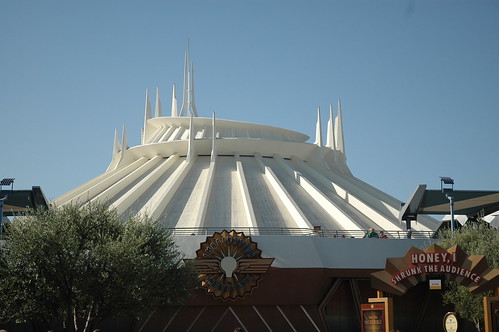
In 1999, Disney brought on-board sound into the 21st century with one of the first roller coasters specifically designed around a musical theme. Rock ‘n’ Roller Coaster Featuring Aerosmith set the standard for music on roller coasters that was left unchallenged for more than 10 years. The coaster trains, designed to look like “stretch” limos, pump sound through 120 on-board speakers. The music was not initially ear-splittingly loud, but was definitely loud enough to overcome the sounds from the riders and train.
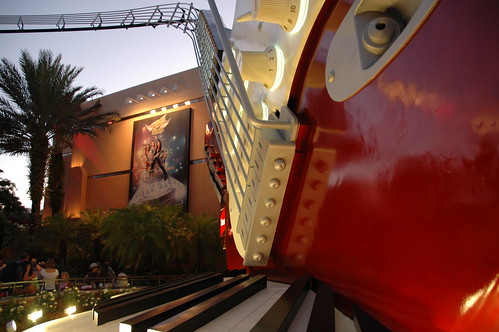
Even in the new millennium, ride designers were still having difficulty getting on-board speakers to overcome the sounds of the ride itself along with the riders. Improvements in battery technology and advancements in solid state memory and file compression eventually allowed for a crisp, clear delivery of music and sound effects to riders. 24-volt sound systems are now the standard for on-board coaster sound systems, and were first introduced in California Screamin’ (Disney California Adventure). The 2005 complete redesign of Space Mountain and a 2007 upgrade of Rock ‘n’ Roller Coaster also brought the boosted 24-volt sound system to the masses, and revitalized the aging musical coaster pioneers.
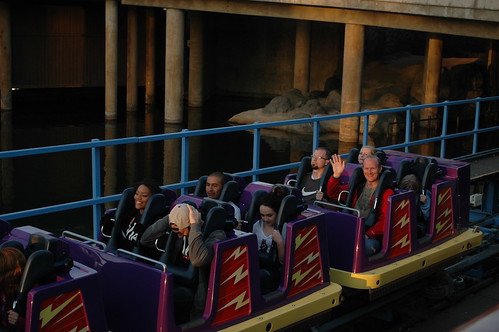
In 2008, the combination of music and roller coaster reached its pinnacle with the debut of three new musical roller coasters in a single park. Hard Rock Park, now appearing these days on NBC as a film set for “Evolution”, showed what can be done when you put a kickin’ sound system on a roller coaster. Eagles: Life in the Fast Lane was a rather benign double-lift mine train-style roller coaster, but with a well synchronized soundtrack of songs from one of America’s most popular rock/country bands, it made a simple ride far more interesting and exciting.
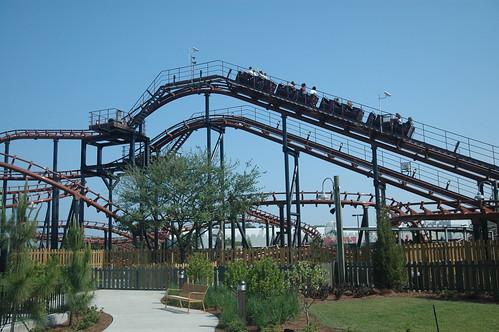
Maximum RPM!, which was probably more unique for its one-of-a-kind ferris wheel lift, blasted a peppy 80’s-era soundtrack through the car’s on-board sound system.
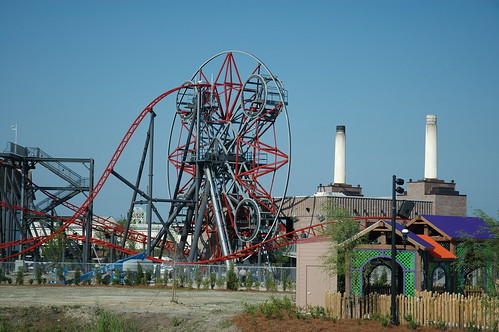
However, Hard Rock Park’s signature coaster was themed around one of the most iconic rock bands of all time, Led Zeppelin: The Ride. The coaster was meticulously designed with input from the band, which required designers to play the selected song (“Whole Lotta Love”) in its entirety. With a 5-minute song and most coaster durations lasting under 3 minutes, designers had an interesting dilemma: come up with a 5+ minute roller coaster, pick a different song, or find a way for guests to somehow experience the enter song though a pre or post-show. The later was the final solution, and with a cleverly integrated pre-show and loading process, riders would hear the first half of the song in a sound stage before boarding the coaster. Once on board, the song picked right up leading to a Robert Plant scream synchronized to the first drop. In order to further enhance the on-board audio experience, designers filled the track and supports with sand to reduce sounds coming from the train rolling along the track and positioned speakers in front of each seat and behind riders’ heads. Those who had a chance to ride Led Zeppelin: The Ride for the year that the park was open, experienced what is still probably the greatest musical roller coaster ever built.
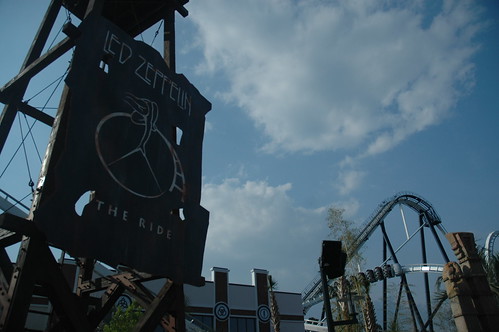
A year later in 2009, Universal, after much publicity, debuted one of the most technologically complicated roller coasters operating today. Hollywood Rip, Ride, Rockit not only features a booming on-board sound system, but gives riders the ability to create their own soundtrack and make a video of them rocking out to their selected tune. The coaster went through a series of technical issues, culminating with a flaw in the train design that left the coaster out of service for well over a year. However, after all of the issues and an unusual track layout, it is likely to continue to thrill guests for years with its hidden musical tracks that provide hundreds of musical options and customizable experience.
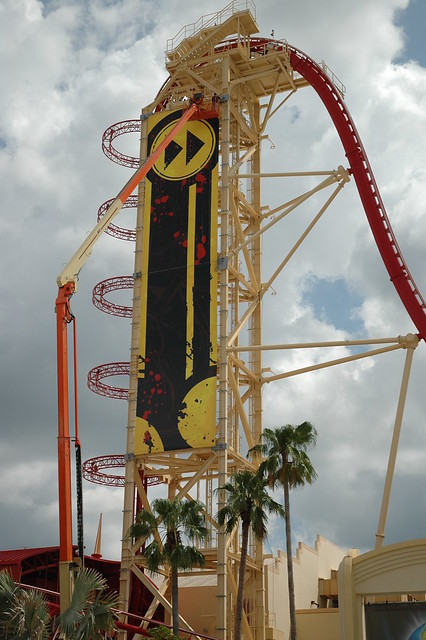
Even Six Flags is working to implement music and sound effects through on-board speakers with X2 (upgraded with on-board sound in 2008) and Bizarro (upgraded Superman Ride of Steel at Six Flags New England and Medusa at Six Flags Great Adventure in 2009). While the soundtracks for the upgrades Six Flags coasters are more sound clips than storytelling mechanisms, they still add a level of excitement that is noticeably missing if you happen to experience the coaster without the soundtrack.
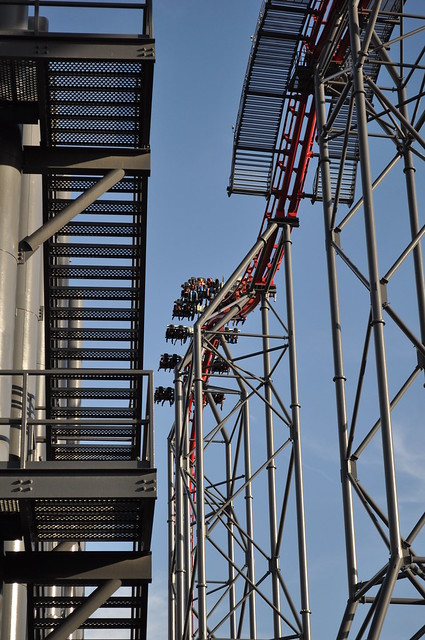
Music plays such a huge role in theme parks, and designers are just scratching the surface of integrating music and sound effects on roller coasters. On-board sound has almost become a necessity on modern dark rides like Spiderman, Transformers, Harry Potter and the Forbidden Journey, Indiana Jones Adventure: Temple of the Forbidden Eye, and Curse of DarKastle. As parks look to make new and more interesting coaster experiences, on-board music and sound is bound to play a larger role in future coaster designs.
Tweet
This article has been archived and is no longer accepting comments.